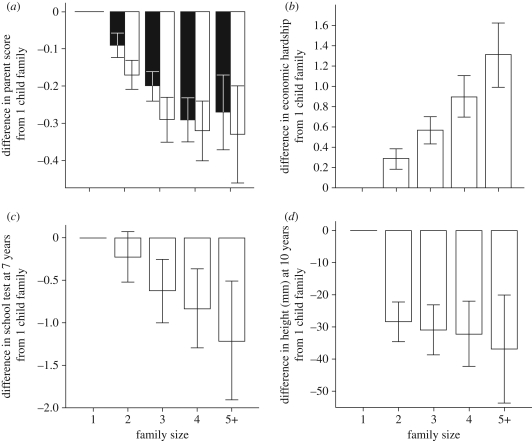Figure 2.
Family size, parental investment and child development in contemporary British families. The relationship between family size and (a) maternal and paternal allocations of care time (standardized ‘parent scores’) between 1 and 9 years (filled bars, mother score; unfilled bars, partner score; adapted from [51]); (b) maternal perception of economic hardship from 0 to 7 years (adapted from [76]); (c) school test results at 7 years (adapted from [83]); (d) height at age 10 years (from [83,85]). Children with more siblings receive less time from parents, grow up in more economically stressed households and exhibit relatively poor physical and cognitive/educational development. Data are from the Avon Longitudinal Study of Parents and Children, a large cohort study (n = 14 000 and above) of children born in 1991–1992. Confidence intervals are set at 95%.

